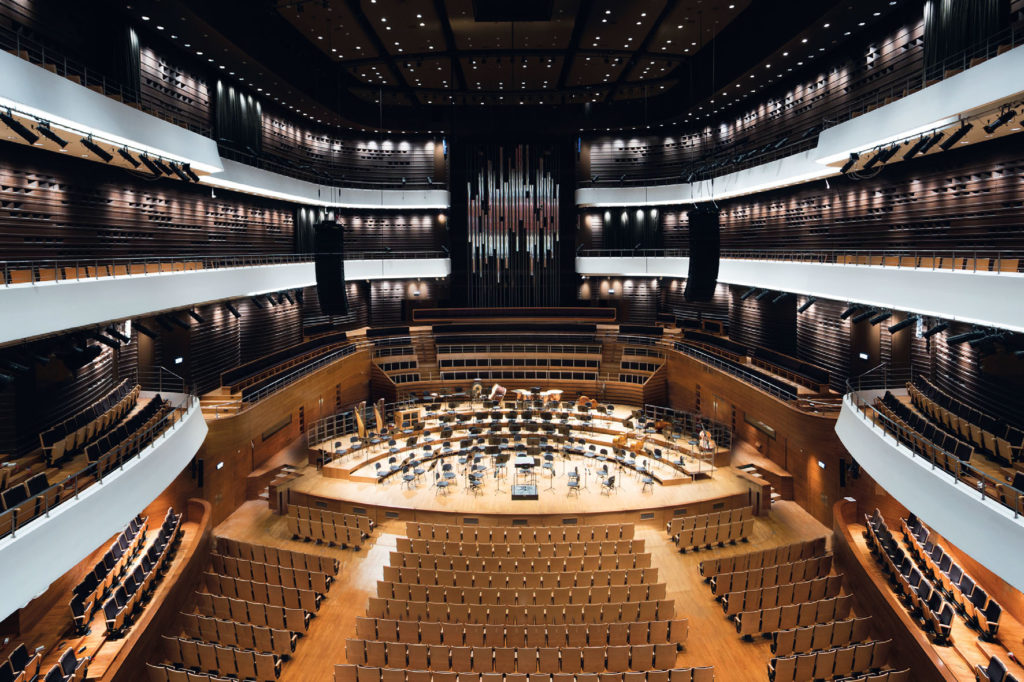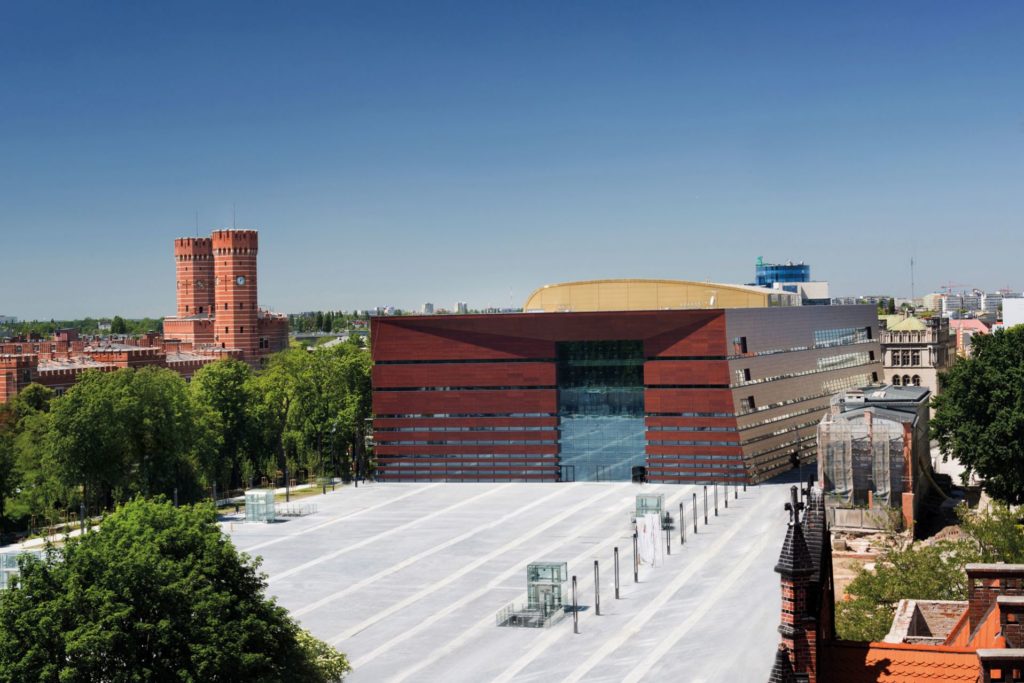Where are those talents?
More and more is being said about the successes of Polish architects abroad. However, when you look from a distance, things are a bit different.
Adrian Krężlik
I, who am terribly Polish and terribly rebellious against Poland, have always been irritated by that little, childish, secondary, ordered, and religious world that is Poland. I attributed Poland’s historical lack of dynamism as well as Poland’s cultural impotence to these characteristics because God led us around by our little hand. I compared this well-behaved Polish childhood to the adult independence of other cultures. This nation without a philosophy, without a conscious history, intellectually soft and spiritually timid, a nation that produced only a “kindly” and “noble-minded” art, a languid people of lyrical scribblers of poetry, folklorists, pianists, actors, in which even Jews dissolved and lost their venom.
“Diaries” Witold Gombrowicz
In his brilliant book The King’s Phantom Body, Jan Sowa extends Gombrowicz’s thought to the Intermarium, arguing that Eastern and Central Europe have never brought new values to the discourse of European and international culture, art or science. In his book, Sowa repeatedly emphasizes the derivative character of the artists for the above-mentioned region. He argues that it is difficult to find a Hungarian style of painting, a revolutionary idea coined in Romania or, finally, a Polish architectural style. It seems that Sowa’s argument is not entirely just – geniuses, such as Chopin or Kafka have come from Eastern Europe. Nonetheless, Poland is certainly situated on the peripheries. In a historical perspective, the above statement refers to a geographical localization; subsequently it became suitable also for mental, social and cultural peripheries. However, looking through the prism of post-Internet culture, we hope that knowledge between the center and the periphery flows freely in both directions, and the culture of the center will cease to be valued more.

NFM / by Łukasz Rajchert
Bauman writes about similar aspects of democratization and dehierarchisation of culture in his book Culture in Liquid Modernity, pointing to the blurring of the boundaries between “high” and “popular” culture. We can draw analogous conclusions today for the opposition center (centers) – peripheries. It appears that centricity first substitutes for polycentricism and ultimately abolishes the term “periphery”.
Poland has undergone major changes in the past 30 years. Cities, towns and villages have been transforming rapidly. We have built more than 30 (sic!) sport stadiums, 14 airports, 10 music halls, and countless museums. It has been a great opportunity to make a proud display and to make a mark on the architectural map of Europe. A great opportunity to send a message that Poland has great, inventive and creative architects. A talented crowd, hidden behind the Iron Wall, capable of adding new values to the international and European discourse. Unfortunately, something went wrong.
“Prestigious” awards
Mass media frequently inform us about many awards for Polish buildings and about Polish architects making careers abroad. But are they present in the European and international discussion on architecture? How many Polish architects have received recognition or awards in the international competitions? Do Polish architects construct abroad? Are Polish architects present at international conferences, juries or exhibitions?
According to The Society of Polish Architects, there are around 13,000 architects registered in the country. Roughly as much as in Belgium. A bit more than in Denmark, and a bit less than in Portugal. Where, in that case, have talents such as Kersten Geers, Ingels, Utzon, Souto de Moura, Siza, Mateus been hiding? Why are Polish jewels not shining so bright?
Nowadays, outstanding achievements in the architecture field receive countless awards and prizes. The most prestigious are: Pritzker Prize (since 1979) to continue with Alvar Aalto Medal (1967), Jane Drew Prize (1998), Praemium Imperiale (1989), Royal Gold Medal (1848), Wolf Prize (1978), Mies van der Rohe Award (1988) and European Prize for Architecture (2010). Until now, none of the Polish architects has been awarded any of the above-listed prizes. In 2015, the Szczecin Philharmonic, designed by a Spanish studio Barozzi Veiga, won Mies van der Rohe Award. Fortunately, Polish architects have been recently nominated to several prizes, which fills with hope.

NFM / by Łukasz Rajchert
A curse of abundance?
As mentioned above, it is easy to notice the abundance of cultural and infrastructural projects in almost every large city in Poland. Only a closer look reveals an unhealthy disproportion between national and foreign companies participating in these ventures. The largest international airport in Poland, Warsaw Chopin Airport, was designed by Estudio Lamela from Spain. Gdańsk and Wrocław terminals have been designed by a German consortium led by JSK company. Only Katowice, Kraków and Poznań airports have been designed by local architecture firms.
New sport arenas were built to host Euro Cup 2012. Once more, German JSK company was responsible for the National Stadium and another one, in Wrocław. A German company Rhode Kellermann Wawrowsky (RKW Architektur +) created the Baltic Arena in Gdańsk. The Shakespeare Theatre in Gdańsk was designed by Renato Rizzi; Fernando Menis designed the cultural centre in Toruń; Rainer Mahlamäki was responsible for the Museum of the History of Polish Jews in Warsaw. The list continues with the Silesian Museum (Riegler Riewe Architekten), Kraków Museum of Contemporary Art (Claudio Nardi and Leonard Maria Proli), the Museum of Contemporary Art in Warsaw (Christian Kerez and later Thomas Pfeifer), and Sinfonia Varsovia (Thomas Pucher Atelier).
“The facts speak for themselves, so far Polish architects have not completed a single important project abroad”.
Only a handful of cultural buildings were designed in Poland: National Music Forum in Wrocław (Kuryłowicz & Associates), NOSPR in Katowice (Tomasz Konior) or the Opera Nova in Bydgoszcz (Józef Chmiel). The above proves that buildings with generous budgets where in majority designed by foreign studios.
The reasons for that unfortunate situation are countless. Lack of necessary experience could disqualify a company from the competition. As a result of the political transformation in the 1990s, the largest state-owned design firms have disappeared, dispersed or divided. A myriad of small studios appeared, often with limited capital and manpower. Young companies did not have the same human resources, collaborators, consultants and money to challenge their foreign colleagues. Competing on an international level was simply impossible.
A curiosity
Probably the most prominent Polish architect working abroad was Maciej Nowicki. He designed an exhibition hall in Raleigh and was commissioned to be a chief architect for a city of Chandigarh in India. Due to a fatal aircraft accident, Le Corbusier continued the project.
Since then, very few had a chance to build abroad under their own name. Stanisław Fiszer (who worked mostly in France, Cambodia and at the Ivory Coast, where he developed his unique style), Lucjan Korngold (who completed numerous housing buildings in Brazil; his work was exhibited in MoMA), Iwona Buczkowska (acclaimed for the innovative use of wood in architecture), and recently Renata Sentkiewicz (name partner of a successful Spanish studio Ábalos + Sentkiewicz ) or Jola Starzak with Dawid Strebicki. There is a common denominator for Polish architects abroad. They stay, design and build abroad. Even if there are some great achievements in that field, they are part of French, Belgian or American culture.
Only a few Polish companies completed projects abroad, mostly in Eastern Europe or Russia. JEMS realized a housing project in Novosibirsk and APA Wojciechowski designed an office building in Moscow. WWAA, +48 Architektura, Maciej Siuda are architects of the young generation who completed works abroad. Nonetheless, it is important to emphasize that these projects were commissioned and financed either by the Polish government or Polish NGOs. The facts speak for themselves; for the time being Polish architects have not completed a single significant project abroad.
Recognition could also be measured with publications in books and newspapers. Bud Cud is, unfortunately, the only Polish studio or an architect that has a monograph published by a foreign publisher. Printed magazines, such as Domus, Detail, Architectural Record perceive Polish architecture rather as an exotic species, than a part of the European community.
The real major change comes in 2004 when Poland joined the European Union. Thousands of Millennials flocked abroad, countless started studies at European universities, participated in the Erasmus program. Many of them stayed, served an internship and got employment. I am one of the examples, for a fact. If we browse the team section on the website of most of the medium and large-sized European studios we can find Polish surnames, at Zaha Hadid Architects, BIG, UnStudio, Snohetta, Foster+Partners, MVRDV, OMA, Henning Larsen, GRAFT, Henn, GMP, Sejima, Herzog + De Meuron to list a few.
New friendships and relationship with colleagues from Spain, Italy, Finland, Germany have changed the consciousness of a new generation. It would be a very difficult task to convince this competent, well educated and experienced crowd. To come back to the country. Large companies, universities and professional association should play an important role, either as an employer or simply a facilitator.

NFM / by Łukasz Rajchert
There are not coming back
It is common knowledge that before the fall of the Berlin Wall, Poles have hardly traveled to non-Soviet countries. In the early 1960s, there were as little as about 1,000 people per year visiting Western Europe. Subsequently, in the 1970s, there were 200,000, and in the eighties, after the Martial Law (1981-1983), the number skyrocketed to 1,000,000.
It was difficult to receive a passport. In order to leave the country, one would have to pay a deposit to the bank. On top of that, the annual average salary in Poland in the mid-seventies was roughly 20 times lower than in the United States or Germany. It was difficult, or in most cases even impossible to remain in contact with colleagues from Western Europe, U.S. or Asia.
The isolation brought about insufficient knowledge of foreign languages. “Generation X”, as we call the generation of the Polish People’s Republic, is unlikely to speak a foreign language; they were taught Russian at school. As a result, only a few Polish architects could have travelled and studied abroad, and could have brought connections, and fresh knowledge and concepts. Polish architects from “Generation X” have worked in Poland and were immobilized.
One could think that the situation would have changed in the 1990s. The fall of communism left a fatal imprint at the state of Polish architecture, since its main client, the state, was not looking for new investments, and foreign companies were usually hiring foreign architects.
The real major change came in 2004, when Poland joined the European Union. Thousands of Millennials rushed abroad, countless started studies at European universities, participated in the Erasmus program. Many of them stayed, had internships and received employment. As a matter of fact, so have I. If we browse the team section on websites of most of the medium and large-sized European studios, we will find Polish surnames – at Zaha Hadid Architects, BIG, UnStudio, Snohetta, Foster+Partners, MVRDV, OMA, Henning Larsen, GRAFT, Henn, GMP, Sejima, Herzog + De Meuron, among others.
New friendships and connections to colleagues from Spain, Italy, Finland, Germany have changed the consciousness of the new generation. It would have been very difficult to convince this competent, well-educated and experienced crowd to return to their home country. This task could have been easier if large companies, universities and professional associations should help, i.e. by offering employment.
“Blaming the history has always been a convenient excuse. But if we compare Polish architecture scene to the other colonies (as professor Maria Janion describes it), like Brazil, Mexico, Vietnam or Indonesia, the notion of impotence is even stronger”.

NFM / by Łukasz Rajchert
History is to blame?
Professor Małgorzata Omilanowska argues that the comparison between Western and Eastern European architecture should not be drawn. She emphasizes that Poland had to face problems incomparable to the problems in Germany or Austria. In the twenties there was a need to define “national distinctness”, and afterwards, the course of history and circumstances did not help architects. Blaming our failures on the geographical and political situation could be considered a specific Polish trait.
Blaming the history has always been convenient. However, if we compare the Polish architecture scene to other colonies (as professor Maria Janion describes them), such as Brazil, Mexico, Vietnam or Indonesia, the creative impotence and apathy seem even larger. Post-colonial architects have emerged from the shadow a long time ago and spoke up in the architectural discussion. Let us just mention Félix Candela and his outstanding shell-structures in Mexico or Vo Trong Nghia who gave a new meaning to bamboo.
Today, Poles participate in building a contemporary and global culture. Poland is part of an international discourse. Polish artist, such as Tokarczuk (The Man Booker Prize 2018), Bałka (individual shows in Tate Modern in London or Reina Sofia Museum in Madrid), Szumowska (Silver Bear at Berlinale in 2015 and 2018), Sosnowska (individual shows at MoMA in New York, Manifesta 4 in Frankfurt or Serpentine Gallery in London) have gained worldwide recognition. They prove the significance of the voices of Eastern Europe to the world.
Art has always been a forerunner opening the door for architecture. Almost unconstrained freedom of creation gave artist the opportunity to make a statement, and to encourage reflection. Differently from art, architecture has to negotiate between an architect, an engineer, general constructor and a client. The budget often limits even the most avant-garde and ingenious proposals. And yet, a studio develops its own character over the years. New solutions receive understanding and support from clients, so that a designer can afford to take a step forward. Meeting clients who are brave and understanding is essential to the process of development of architects. On the one hand, architecture is not taught at schools, which brings about difficulties in communication between clients and architects. On the other hand, students of design are educated to become “demiurges”, who believe they are designing only for themselves.
The young generation, educated abroad, travelling a lot, is capable of looking at Poland from a distance. The sense of inferiority is present only in the minds of the past generation. Changing their attitude might prove impossible. I believe that today, the Millennials and the next generations of architects are ready to face contemporary challenges and to bring a Polish viewpoint to international architecture. We have first good news: VELUX awards, YTAA, LafargeHolcim Awards, Future Architecture Platform, 120 hours competition… Let’s see what happens next!

Adrian Krężlik – an architect, educator and creative entrepreneur dedicated to application of contemporary science and technology into design processes. Founder of an educational platform Architektura Parametryczna and a start-up Parametric Support, which researches the use of Artificial Intelligence for automation and optimization of design processes. He teaches at Weißensee Kunsthochschule and the School of Form.



